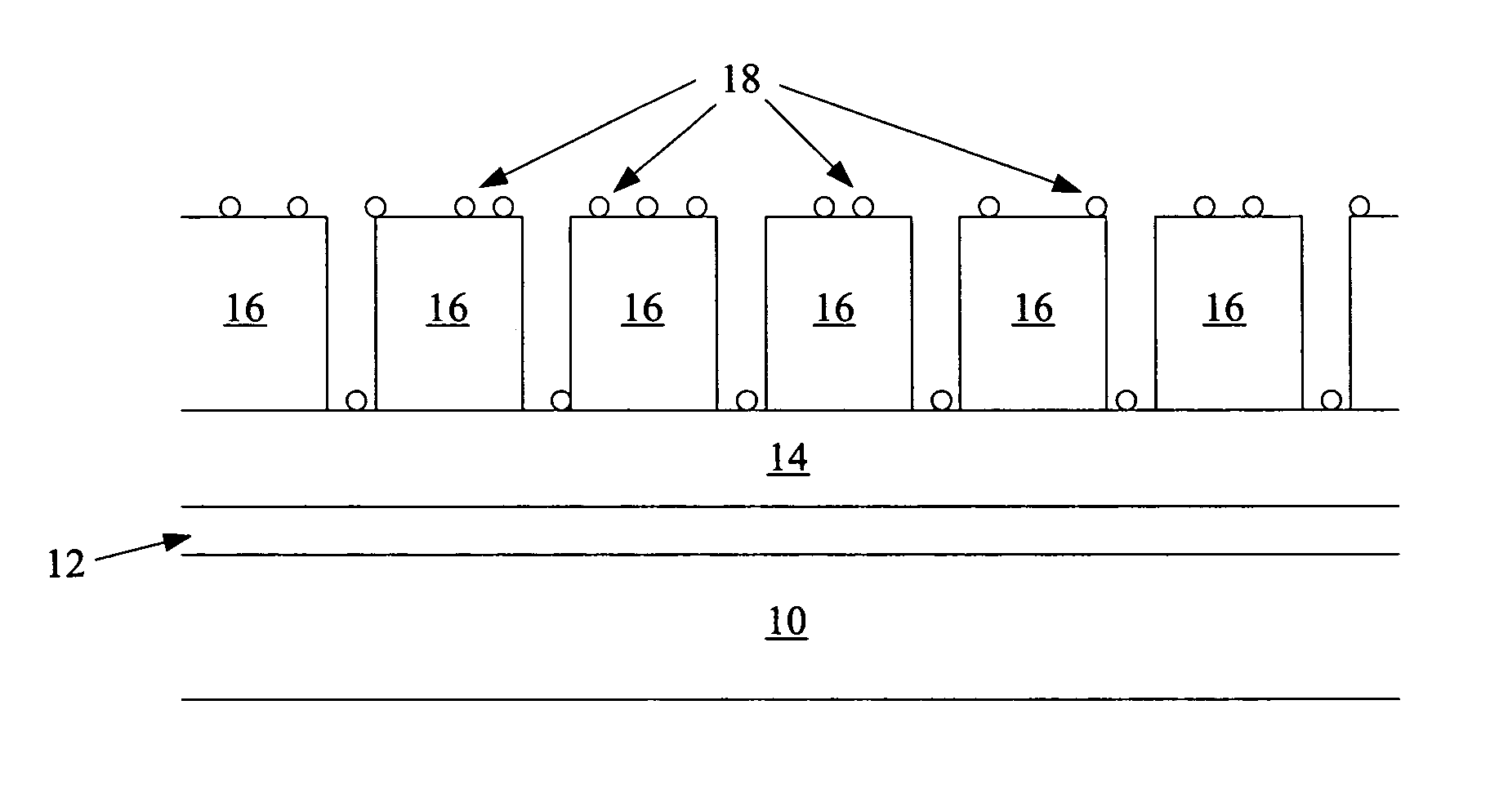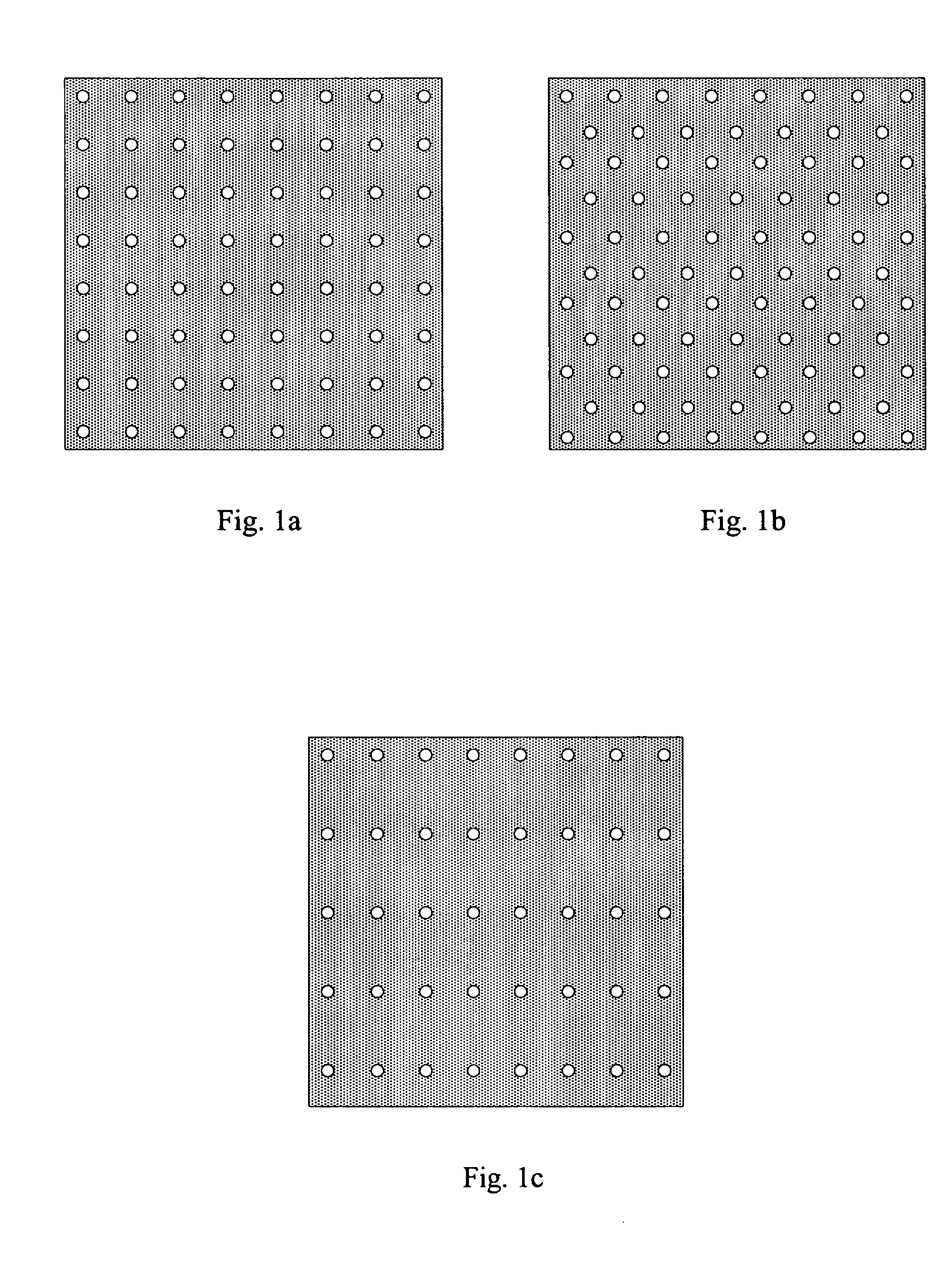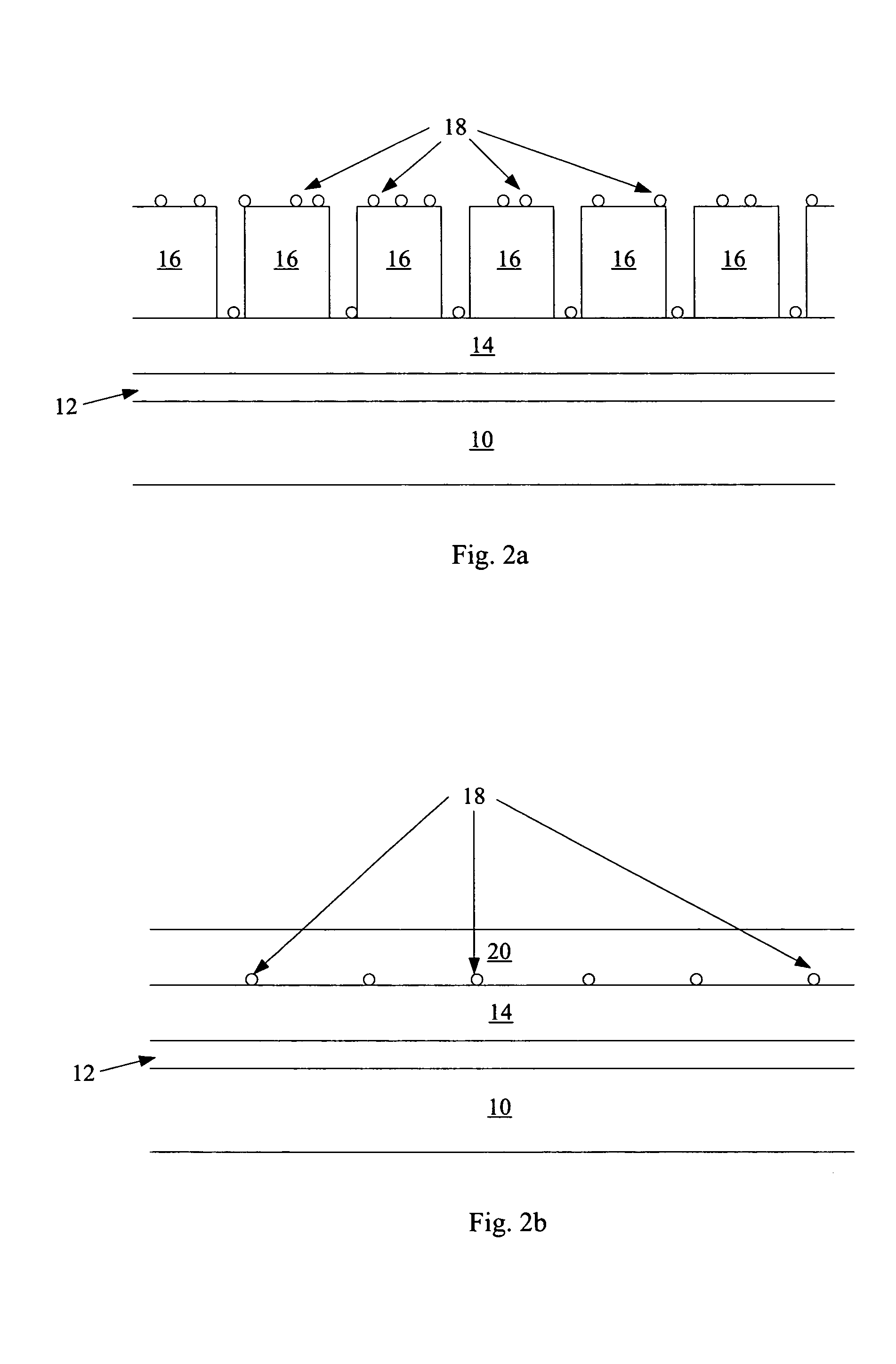Method of uniform seeding to control grain and defect density of crystallized silicon for use in sub-micron thin film transistors
a thin film transistor and crystallization technology, applied in the direction of transistors, semiconductor devices, electrical equipment, etc., can solve the problems of limiting the use of tfts largely, and not controlling the placement of silicon nuclei
- Summary
- Abstract
- Description
- Claims
- Application Information
AI Technical Summary
Benefits of technology
Problems solved by technology
Method used
Image
Examples
first embodiment
s Crystallizing Agent
[0036]A preferred embodiment which calls for selectively introducing silicon nuclei in a substantially symmetric pattern, where the silicon nuclei behave as a crystallizing agent, will be described in detail.
[0037]Deposition of amorphous silicon begins with any suitable substrate. Turning to FIG. 2a, in this example the substrate 10 can be any dielectric or any semiconductive material, such as, for example, a bulk silicon wafer. CMOS or other circuits may be formed in the substrate. A dielectric layer 12 may overlie the substrate 10. Clearly other substrates may be used, and dielectric layer 12 may or may not be present, as may other additional layers.
[0038]Amorphous silicon layer 14, as shown in FIG. 2a, can be deposited by low pressure chemical vapor deposition (LPCVD) or any other method known in the art. Amorphous layer 14 is about 50 to about 1500 angstroms thick, preferably about 500 to about 1000 angstroms thick, more preferably about 500 angstroms thick....
second embodiment
tallizing Agent
[0051]In some embodiments, germanium is used as a crystallizing agent instead of silicon nuclei. A detailed example will be given, though conditions can be varied and steps can be added or omitted while the method and its results remain within the scope of the invention.
[0052]Turning to FIG. 3, formation of the first amorphous layer 14 over dielectric 12 and, for example, substrate 10, followed by formation, pattern, and etch of holes in mask layer 16 can be done using the same techniques and materials as those described in the previous embodiment, in which the crystallizing agent was silicon nuclei.
[0053]Next a layer of germanium 26 is deposited by any conventional method, for example by LPCVD, for example using GeH4 as a source gas, with temperature of about 500 C at 100 mTorr. Germanium layer 26 is preferably between about 50 and about 200 angstroms thick, more preferably about 100 angstroms thick.
[0054]Under these conditions the deposition of germanium is inherent...
third embodiment
Crystallizing Agent
[0057]The crystallizing agent can be laser energy. As in the two previous embodiments, an amorphous silicon layer, for example formed over a dielectric layer and a wafer substrate, is formed using the methods described earlier. This embodiment calls for treating the first amorphous layer with a laser at locations distributed in a substantially symmetric pattern.
[0058]The wafer can be mounted on an x-y linear stage. The wafer surface can be illuminated at substantially uniform intervals. At each point at which the wafer is exposed to laser energy, the amorphous layer is transformed into a large single grain which can grow further upon annealing. The width of the laser and the exposure intervals can be chosen to produce the desired pattern; for example an area 0.5 micron wide can be exposed, with centers of the exposed areas 2 microns apart in a grid pattern.
[0059]The amorphous silicon layer can be irradiated with pulsed (10–100 nsec) XeCl excimer laser (308 nanomet...
PUM
| Property | Measurement | Unit |
|---|---|---|
| grain sizes | aaaaa | aaaaa |
| thick | aaaaa | aaaaa |
| thick | aaaaa | aaaaa |
Abstract
Description
Claims
Application Information
 Login to View More
Login to View More - R&D
- Intellectual Property
- Life Sciences
- Materials
- Tech Scout
- Unparalleled Data Quality
- Higher Quality Content
- 60% Fewer Hallucinations
Browse by: Latest US Patents, China's latest patents, Technical Efficacy Thesaurus, Application Domain, Technology Topic, Popular Technical Reports.
© 2025 PatSnap. All rights reserved.Legal|Privacy policy|Modern Slavery Act Transparency Statement|Sitemap|About US| Contact US: help@patsnap.com



